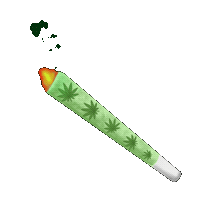
[PT]
Hey! Vamos explorar hoje alguns fatos interessantes sobre o nosso 'Brasilzão', sua história, geografia e diversas curiosidade que você provavelmente não saiba. Não deixe de comentar o que você não sabia e descobriu aqui nessa publicação. Vamos nessa?
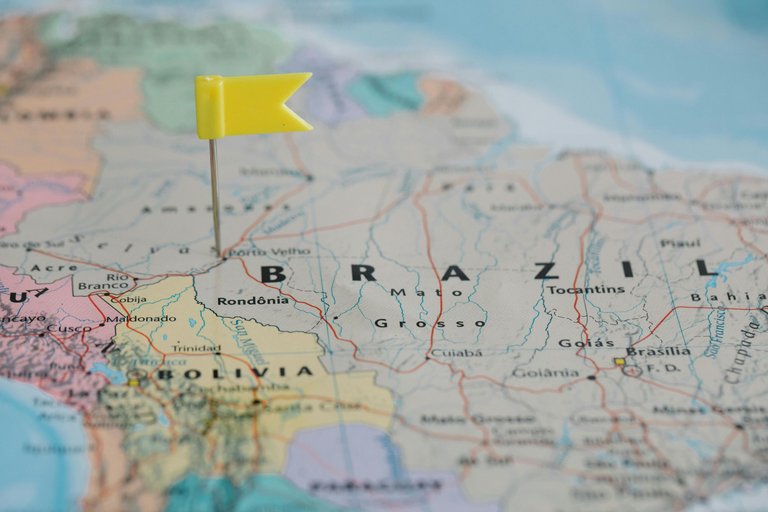
Fonte da imagem: https://www.pexels.com/photo/yellow-flag-pinned-in-brazil-8828319/
Com mais de 8,5 milhões de quilômetros quadrados, a República Federativa do Brasil é o quinto maior país do mundo e o sétimo mais populoso, com 214 milhões de habitantes. Sua capital é Brasília, contando com 3,1 milhões de pessoas. Seu idioma oficial é o português. O seu nome veio do pau-brasil, que significa vermelho como brasa. É dividido em cinco regiões e possui 26 estados, além de um Distrito Federal. Suas maiores cidades são São Paulo, Rio de Janeiro, Brasília, Salvador e Fortaleza.
O Brasil possui seis biomas: Amazônia, Cerrado, Pantanal, Pampa, Mata Atlântica e Caatinga, sendo esse último o único bioma exclusivamente brasileiro. Em sua bandeira, o verde representa as matas, o amarelo as riquezas, azul representa o céu e o branco a paz. As estrelas simbolizam os estados. Já a frase "Ordem e Progresso" veio do positivismo francês, e a palavra "amor" foi excluída. Originalmente, as cores simbolizavam as casas de Bragança e dos Habsburgos. Porém, com o fim do Império, elas ganharam novos significados.
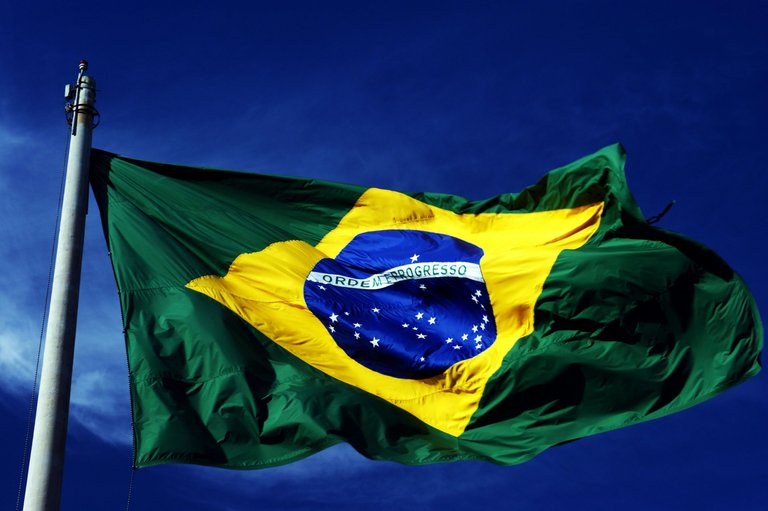
Fonte da imagem: https://www.pexels.com/photo/close-up-of-a-brazilian-flag-9216186/
De acordo com a agência de risco Standard & Poor's, o Brasil é a 10ª maior economia do mundo, com um PIB de 1,83 trilhão de dólares. Não estava no top-10 desde 2020 e sua moeda é o real. Agora, vamos para um pequeno resumo da sua história. E lá vamos nós!
Nossa terra é habitada há milênios. Os tupis-guaranis começaram a migrar do sul da Amazônia e, por volta do ano 1.000, já dominavam quase todo o litoral brasileiro, empurrando outros povos para o interior. Eles chamavam essa terra de Pindorama, ou seja, Terra das Palmeiras. Em 1500, os europeus desembarcaram por aqui e chamaram o lugar de Terra de Vera Cruz, passando a ser chamado de Brasil a partir de 1527. Em 1822, declara independência do Reino de Portugal, Brasil e Algarves, com o Império vindo a cair em um golpe republicano em 1889. Desde então, passou por momentos turbulentos, vivendo três ditaduras militares, com as mais relevantes sendo a da Era Vargas e a que durou de 1964 até 1985. De lá para cá, ocorreram dois impeachments, crescimento, queda econômica e muita, muita crise política.
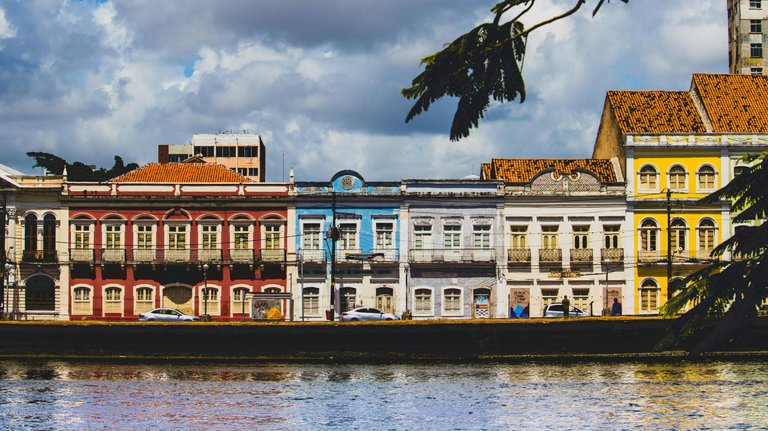
Fonte da imagem: https://www.pexels.com/photo/colorful-concrete-building-beside-body-of-water-4009955/
Pedro Álvares Cabral não foi o primeiro europeu a chegar aqui; na verdade, foi o espanhol Vicente Pinzón, que desembarcou no nordeste quase três meses antes, fato esse comprovado e documentado. A localização exata é motivo de debate entre os estudiosos, pois pode ter sido no Cabo de Santo Agostinho, em Pernambuco, ou na praia de Ponta Grossa, no Ceará. Os indígenas do litoral possuíam um ritual bastante excêntrico e único nas Américas, o chamado ritual antropofágico, que consistia simplesmente em comer a carne dos inimigos capturados em uma grande festa. Um item usado nesse ritual era o manto sagrado Tupinambá que hoje, existe apenas um preservado, e está em um museu na Dinamarca.
A região sul do país é famosa pela incidência de neve em algumas áreas durante o inverno. Mas você sabia que já nevou nas serras do Rio de Janeiro? Houve uma grande nevasca lá no Parque do Itatiaia, em 1985, com um metro de neve acumulado. O último registro de neve no local foi em 2012.
Você sabia que os Lençóis Maranhenses foram cenário para o filme de Os Vingadores: Guerra Infinita? Pois é, esse parque nacional de paisagens únicas foi cenário para o planeta Vormir na franquia. Um dos únicos vulcões do país que mantém o seu formato original é o Pico do Cabugi, no Rio Grande do Norte. Há quem defenda que esse foi o ponto visto pela frota de Cabral, e não o Monte Pascoal, na Bahia. O que reforça isso é o fato de ser no estado onde está o primeiro marco do descobrimento do Brasil pelos portugueses, mais precisamente no município de São Miguel do Gostoso. O que está hoje no local é apenas uma réplica; o verdadeiro está no Forte dos Reis Magos, em Natal.
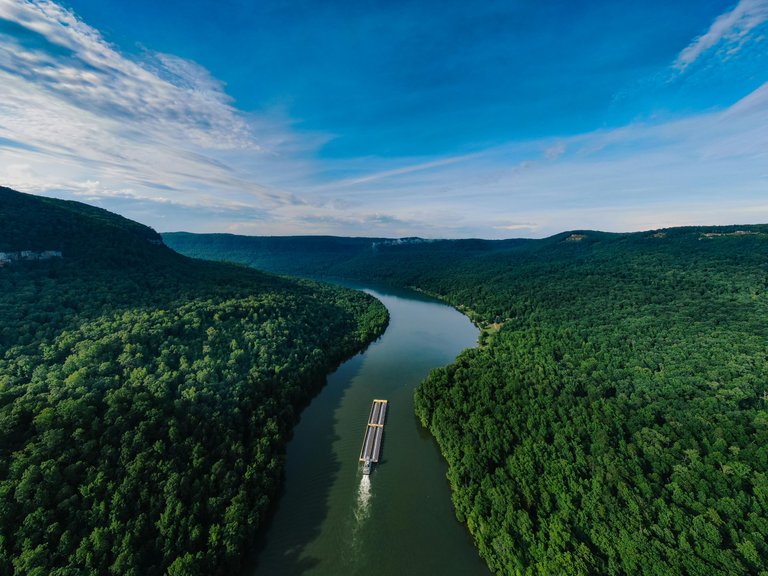
Fonte da imagem: https://www.pexels.com/photo/aerial-photography-of-a-boat-on-a-waterway-in-the-middle-of-forest-2519390/
Que o Brasil é enorme, isso já sabemos. Mas você sabia que o ponto mais oriental do país é mais perto da África do que do Acre? Pois é! Mas o mais surpreendente é que o ponto mais ao norte e o mais ao sul estão tão distantes que o Monte Caburaí, lá em Roraima, está mais perto de todos os outros países da América do que do Chuí. O Brasil abriga cerca de dois terços da Floresta Amazônica, o que contribui para que o nosso país seja o mais biodiverso do planeta. O local ainda possui o maior rio do mundo em volume de água, o que ajuda para que o país seja o primeiro em volume de água doce. Mesmo com tanta água, o Brasil ainda vive um contraste; afinal, possui a Caatinga, a área semiárida mais povoada do mundo, abrigando cerca de 30 milhões de pessoas. É lá onde está o local com a maior concentração de pinturas rupestres das Américas, a Serra da Capivara, no Piauí, e ela é Patrimônio Mundial da UNESCO.
E falando em patrimônios, o Brasil possui 22 no total. Alguns são Brasília, os centros históricos de cidades como Olinda, Ouro Preto e Salvador, as paisagens cariocas e algumas outras. Além disso, possui sete patrimônios naturais da humanidade, como as cataratas do Iguaçu e Fernando de Noronha. Já sediou duas Copas do Mundo de Futebol: a de 1950, que ficou famosa pelo Maracanaço, onde o Brasil foi derrotado pelo Uruguai na final, e a inesquecível Copa de 2014, famosa pela derrota de 7 a 1 para a Alemanha. Mas ao todo, a nossa seleção já ganhou o campeonato cinco vezes e é o único país do mundo a ter ganho tantos títulos, com um ouro inédito sendo conquistado nas Olimpíadas do Rio 2016 e em cima de quem? Da Alemanha.
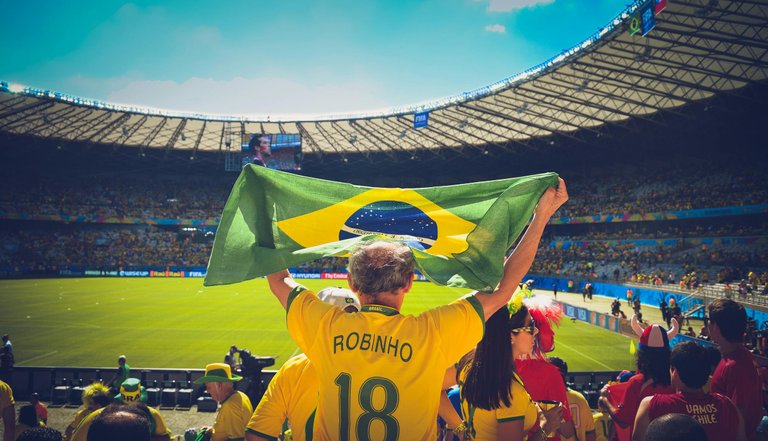
Fonte da imagem: https://www.pexels.com/photo/man-raising-brazil-flag-inside-football-stadium-58461/
Recentemente, a revista Time elegeu as 20 bibliotecas mais lindas do mundo e o Real Gabinete Português de Leitura, no Rio de Janeiro, estava incluso. Ah, e não sei se você sabe, mas entre 1889 e 1968 o nome oficial do nosso país era Estados Unidos do Brasil e, durante os seus primeiros quatro dias, teve até uma bandeira que lembrava em nada a bandeira dos Estados Unidos. Possui a maior rede de cânions da América Latina; os cânions do sul, na divisa entre o Rio Grande do Sul e Santa Catarina, são simplesmente sensacionais, inclusive foram elevados à categoria de Geoparque Mundial, juntamente com o Seridó, no Rio Grande do Norte. E falando em geoparque, o primeiro das Américas foi o do Araripe, lá no Ceará. Ele é um dos três melhores afloramentos do período Cretáceo que existem no planeta, sendo alvo para pesquisadores de diversos países. Seus fósseis bem preservados estão espalhados pelos quatro cantos do mundo, muitos de forma ilegal.
Ah, e eu acho que você não sabe que a fotografia foi inventada independentemente no Brasil, sendo que ao mesmo tempo ela estava sendo inventada na Europa. Pois é, o inventor francês naturalizado brasileiro Hércules Florence desenvolveu sozinho uma técnica de fotografia lá em Campinas e ele foi o primeiro a usar o termo "fotografia", que anos depois também passaria a ser usado na Europa. Porém, foi no Brasil onde esse termo foi inicialmente utilizado. E para quem não sabe, fotografia significa "escrita da luz".
Algumas de suas festas mais populares são as diferentes formas de carnavais, as festas juninas, cuja tradição é muito forte no Nordeste e as festas do boi-bumbá no norte. Nós podemos destacar o Festival de Parintins, a Oktoberfest, muito comum na região sul e em outros estados com descendentes de alemães, a Festa do Senhor do Bonfim, que ocorre em Salvador, e muitas outras. Uma das curiosidades mais interessantes sobre o Brasil é que o nosso país abriga a maior comunidade japonesa fora do Japão, com mais de 2 milhões de japoneses e descendentes vivendo por aqui.
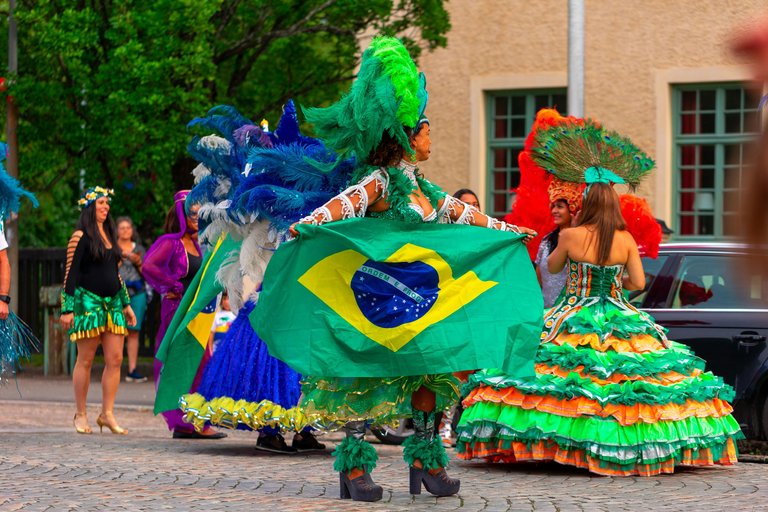
Fonte da imagem: https://www.pexels.com/photo/people-in-costumes-holding-a-brazilian-flag-and-celebrating-on-the-city-street-13395748/
Um fato triste sobre a nossa história é que fomos o país que mais recebeu pessoas escravizadas vindas da África e foi o último das Américas e um dos últimos do mundo a abolir a escravidão legal, que por aqui durou mais de 350 anos. Foram tantos que hoje sua língua, cultura, música, culinária e religiões possuem influências africanas. O seu ponto mais alto é o Pico da Neblina, com 2995 metros de altitude, e ele só foi descoberto pelas autoridades brasileiras nos anos 50, mas já era conhecido pelos venezuelanos. Um fato extra é que a maior esmeralda do mundo é brasileira. A Esmeralda Bahia foi descoberta em 2001 e pesa quase 400 kg, sendo avaliada em mais de um bilhão de reais. Porém, ela foi parar ilegalmente nos Estados Unidos e até hoje o governo brasileiro tenta recuperá-la.
Bom, esses foram alguns dos fatos reunidos sobre o Brasil. Qual deles você achou mais interessante?
Obrigado por ler até o fim.

Todo o conteúdo, imagens e edições foram produzidos por @sousafrc para a comunidade @HiveBR.
Hey! Today let's explore some interesting facts about our 'Brazilzão', its history, geography, and various curiosities that you probably didn't know. Don't forget to comment on what you didn't know and discovered here in this post. Let's go?

Image source: https://www.pexels.com/photo/yellow-flag-pinned-in-brazil-8828319/
With more than 8.5 million square kilometers, the Federative Republic of Brazil is the fifth largest country in the world and the seventh most populous, with 214 million inhabitants. Its capital is Brasília, with 3.1 million people. Its official language is Portuguese. Its name came from the brazilwood tree, which means red like an ember. It is divided into five regions and has 26 states, in addition to a Federal District. Its largest cities are São Paulo, Rio de Janeiro, Brasília, Salvador, and Fortaleza.
Brazil has six biomes: Amazon, Cerrado, Pantanal, Pampa, Atlantic Forest, and Caatinga, the latter being the only exclusively Brazilian biome. On its flag, green represents the forests, yellow the wealth, blue represents the sky, and white peace. The stars symbolize the states. The phrase "Order and Progress" comes from French positivism, and the word "love" was omitted. Originally, the colors symbolized the houses of Braganza and Habsburg. However, with the end of the Empire, they gained new meanings.

Image source: https://www.pexels.com/photo/close-up-of-a-brazilian-flag-9216186/
According to the credit rating agency Standard & Poor's, Brazil is the 10th largest economy in the world, with a GDP of 1.83 trillion dollars. It hadn't been in the top 10 since 2020 and its currency is the real. Now, let's go for a brief summary of its history. Here we go!
Our land has been inhabited for millennia. The Tupi-Guarani people began migrating from the south of the Amazon and by around the year 1000, they dominated almost the entire Brazilian coast, pushing other peoples inland. They called this land Pindorama, meaning Land of the Palm Trees. In 1500, Europeans landed here and called the place Terra de Vera Cruz, becoming known as Brazil from 1527. In 1822, it declared independence from the Kingdom of Portugal, Brazil, and the Algarves, with the Empire falling in a republican coup in 1889. Since then, it has experienced turbulent moments, living through three military dictatorships, the most significant being the Vargas Era and the one that lasted from 1964 to 1985. Since then, there have been two impeachments, economic growth, economic decline, and much, much political crisis.

Image source: https://www.pexels.com/photo/colorful-concrete-building-beside-body-of-water-4009955/
Pedro Álvares Cabral was not the first European to arrive here; in fact, it was the Spaniard Vicente Pinzón, who landed in the northeast almost three months earlier, a fact that is proven and documented. The exact location is a topic of debate among scholars, as it could have been Cabo de Santo Agostinho in Pernambuco or Ponta Grossa beach in Ceará. The coastal indigenous people had a rather eccentric and unique ritual in the Americas, the so-called anthropophagic ritual, which simply consisted of eating the flesh of captured enemies in a grand feast. An item used in this ritual was the sacred Tupinambá cloak, of which only one preserved example exists today, and it is in a museum in Denmark.
The southern region of the country is famous for its snowfall in some areas during winter. But did you know that it has snowed in the mountains of Rio de Janeiro? There was a major snowstorm in the Itatiaia Park in 1985, with one meter of accumulated snow. The last recorded snowfall in the area was in 2012.
Did you know that the Lençóis Maranhenses were a setting for the Avengers: Infinity War movie? That's right, this national park with unique landscapes was the setting for the planet Vormir in the franchise. One of the only volcanoes in the country that maintains its original shape is Pico do Cabugi, in Rio Grande do Norte. Some argue that this was the point seen by Cabral's fleet, and not Monte Pascoal in Bahia. What reinforces this is the fact that it is in the state where the first discovery marker of Brazil by the Portuguese is located, more precisely in the municipality of São Miguel do Gostoso. What is there today is just a replica; the real one is in the Forte dos Reis Magos in Natal.

Image source: https://www.pexels.com/photo/aerial-photography-of-a-boat-on-a-waterway-in-the-middle-of-forest-2519390/
We already know that Brazil is huge. But did you know that the easternmost point of the country is closer to Africa than to Acre? That's right! But the most surprising thing is that the northernmost and southernmost points are so far apart that Monte Caburaí, up in Roraima, is closer to all other countries in the Americas than to Chuí. Brazil houses about two-thirds of the Amazon Rainforest, which contributes to our country being the most biodiverse on the planet. The area also has the largest river in the world in terms of water volume, which helps make the country the first in freshwater volume. Despite having so much water, Brazil still has a contrast; after all, it has the Caatinga, the most populated semi-arid area in the world, housing about 30 million people. It is there that the place with the highest concentration of rock paintings in the Americas is located, the Serra da Capivara, in Piauí, and it is a UNESCO World Heritage Site.
Speaking of heritage, Brazil has 22 in total. Some are Brasília, the historical centers of cities like Olinda, Ouro Preto, and Salvador, the landscapes of Rio de Janeiro, and several others. Additionally, it has seven natural world heritage sites, such as the Iguaçu Falls and Fernando de Noronha. Brazil has hosted two FIFA World Cups: the 1950 one, famous for the Maracanazo, where Brazil was defeated by Uruguay in the final, and the unforgettable 2014 World Cup, famous for the 7-1 defeat to Germany. But overall, our national team has won the championship five times and is the only country in the world to have won so many titles, with an unprecedented gold medal being won at the Rio 2016 Olympics, and against whom? Germany.

Image source: https://www.pexels.com/photo/man-raising-brazil-flag-inside-football-stadium-58461/
Recently, Time magazine selected the 20 most beautiful libraries in the world and the Real Gabinete Português de Leitura, in Rio de Janeiro, was included. Oh, and I don't know if you know, but between 1889 and 1968 the official name of our country was United States of Brazil and, during its first four days, it even had a flag that resembled nothing like the flag of the United States. It has the largest canyon network in Latin America; the southern canyons, on the border between Rio Grande do Sul and Santa Catarina, are simply sensational and have been elevated to the category of Global Geopark, along with the Seridó in Rio Grande do Norte. Speaking of geopark, the first one in the Americas was the Araripe Geopark, in Ceará. It is one of the three best outcrops of the Cretaceous period that exist on the planet, being a target for researchers from various countries. Its well-preserved fossils are scattered around the world, many illegally.
Oh, and I think you don't know that photography was independently invented in Brazil, at the same time it was being invented in Europe. That's right, the French-Brazilian inventor Hercules Florence developed a photography technique alone in Campinas and he was the first to use the term "photography", which years later would also be used in Europe. However, it was in Brazil where this term was initially used. And for those who don't know, photography means "writing with light".
Some of its most popular festivities are the different forms of carnivals, the June festivals, whose tradition is very strong in the Northeast, and the Boi-bumbá festivals in the north. We can highlight the Parintins Festival, Oktoberfest, very common in the southern region and in other states with German descendants, the Senhor do Bonfim Festival, which takes place in Salvador, and many others. One of the most interesting curiosities about Brazil is that our country hosts the largest Japanese community outside Japan, with more than 2 million Japanese and their descendants living here.

Image source: https://www.pexels.com/photo/people-in-costumes-holding-a-brazilian-flag-and-celebrating-on-the-city-street-13395748/
A sad fact about our history is that we were the country that received the most enslaved people from Africa and were the last in the Americas and one of the last in the world to abolish legal slavery, which lasted here for over 350 years. So many were brought that today its language, culture, music, cuisine, and religions have African influences. The highest point is Pico da Neblina, with 2995 meters of altitude, and it was only discovered by Brazilian authorities in the 1950s, but it was already known by Venezuelans. An extra fact is that the largest emerald in the world is Brazilian. The Bahia Emerald was discovered in 2001 and weighs almost 400 kg, being valued at over one billion reais. However, it ended up illegally in the United States and to this day the Brazilian government is trying to recover it.
Well, these were some of the gathered facts about Brazil. Which one did you find most interesting?
Thank you for reading to the end.

All content, images, and edits were produced by @sousafrc for the @HiveBR community.
Posted Using InLeo Alpha


